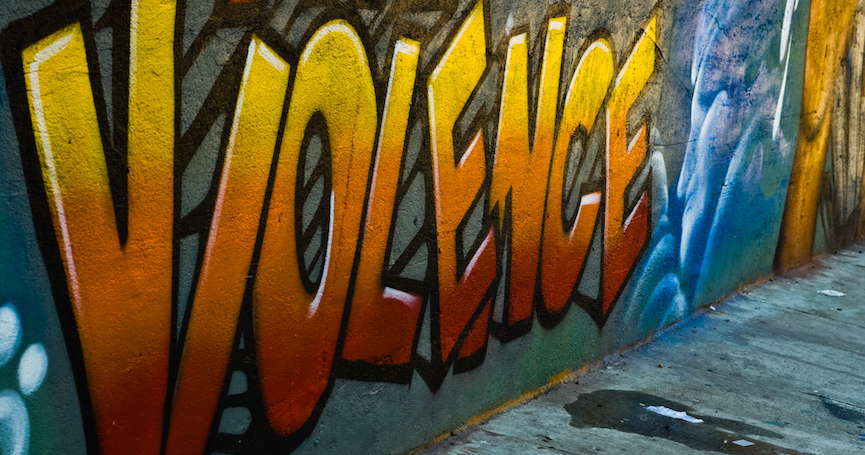Late last Sunday, July 22, a man walked down Danforth Avenue in Toronto’s Greektown, shooting at groups of people on the sidewalk and into restaurants, killing two and injuring 13 others.
The shooting took place almost exactly three months to the day after Toronto’s van attack, in which Alek Minassian deliberately plowed down North York sidewalk, killing 10 pedestrians and injured 16 others, some critically. And just one month after the van attack, a homemade bomb exploded in an Indian restaurant in Mississauga and injured over a dozen diners.
The spike in high-profile violence seems to have shaken Toronto to its core. And statistics indicate that the city, which only last year was ranked the safest in North America, has indeed seen a stark increase in gun violence. Deaths from gun-related incidents in Toronto jumped nearly 60 per cent from the same period last year, and the national homicide rate climbed 7 per cent, continuing to rise for the third consecutive year after an 11-year downward trend.
The headlines following this week’s shooting confirm widespread anxiety over Toronto’s identity: “Danforth shooting leaves Toronto reeling from another collective trauma,” “Toronto’s safe-city tag in question after spike in gun crimes,” and “Rattled by string of violent attacks, Toronto wonders if city is unraveling” are just some of a few.
But as the public panics over troubling crime stats and legislators scramble to pass handgun bans and other gun control measures, Canadians would do well to remember that addressing violence effectively requires a more complex approach than our legal systems and collective imaginations often allow. And that’s not just because nearly half of guns in Canada flow across the U.S. border, but because violence isn’t a question of public safety, it’s a question of public health.
It goes without saying that gun control and related measures are crucial tools to curbing gun violence. But guns themselves do not cause violence, they are tools of violence, they facilitate violence. To address violence preventatively and to treat it effectively, we must address it much in the same way as we would an infectious disease. Societies must be able to act reactively and proactively, at the individual and social levels, simultaneously.
A public health approach to violence involves applying concepts of disease transmission, risk factors, treatment, and immunity to the spread of violence, all while addressing environmental factors that influence a community’s overall immunity or susceptibility. And it’s this last piece, reckoning with environmental or exogenous factors, that will require the most creative and holistic approach, because these factors extend beyond an individual’s circumstances and into intergenerational and material structures. To prevent individual acts of violence, we must necessarily address the violence perpetuated by capitalism, racism, and patriarchy on a daily basis. The banal ways in which violence permeates our everyday life. In doing so, we must radically rethink what justice looks like and how we administer justice. And of course, we cannot resort to the carceral state; prisons are merely a symptom of our inability to address violence in the first place. Justice must be transformative and compassionate.
What’s more, the spectacle around public or mass violence often detracts from the ways in which every day acts of violence fit into such a compassionate and trauma-informed strategy for dealing with violence. As Michael Laxer wrote this week, the conversation around mass shootings very often does point to the exogenous factors, or the root causes of violence, including social isolation, mental health, and poverty. But while nearly 100 per cent of perpetrators of mass violence are men, rarely does the discourse implicate misogyny. But what if, as Matthew Behrens suggests, we reframe domestic violence towards women — which normally occurs in a private, domestic context and unlike mass violence is invisible in the public sphere — as terrorism and torture? How does that change our understanding of and approach to misogyny and gender-based violence?
In other rabble news
This past week, the Canadian government missed its deadline to find a private sector buyer for the controversial Kinder Morgan Trans Mountain pipeline project. The writing is on the wall for major fossil fuel projects, and any corporation interested in the pipeline will face immense opposition from Indigenous communities, environmentalists, and let’s face it, the entire province of British Columbia. Council of Canadians blogger Andrea Harden-Donahue takes stock of the ongoing direct actions and resistance to the Kinder Morgan Trans Mountain Pipeline project — from tiny houses in the Secwepmec territory to activists suspending themselves from bridges and flotillas. In other environment news, David Suzuki reports on Vancouver’s impending ban on single-use plastics and why other municipalities should follow the city’s lead.
The Supreme Court recently ruled that the partisan political advocacy limit imposed on registered charities under the 1985 Income Tax Act contravenes the rights protected by the Canadian Charter of Rights and Freedoms. Responding to the ruling, Duncan Cameron imagines how possible legal alterations to Canada’s income tax laws and structure could contribute to a more vibrant, participatory democracy. But what happens to tax revenue is another story. Yves Engler looks at how capitalism siphons off taxpayer money to bailout the private sector and financial corporations. “The fairy tale about capitalism is a way to justify rich people running the country and to dupe us out of our money to subsidize them doing it,” he writes.
Thanks for reading rabble’s weekly roundup. Stay tuned for more news for the rest of us.
Sophia Reuss is rabble.ca’s Assistant Editor.
Image: ieat31415/Flickr
Like this article? rabble is reader-supported journalism. Chip in to keep stories like these coming.




